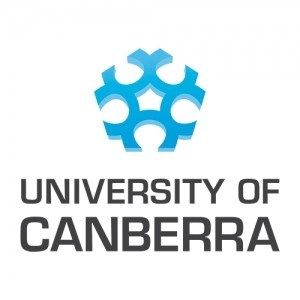STEM stands for mathematics, science, technology, and engineering. STEM graduates are in high demand in a variety of industries because it encompasse...
STEM stands for mathematics, science, technology, and engineering. STEM graduates are in high demand in a variety of industries because it encompasses all of these subfields.

STEM degrees are often taught in a hands-on, interdisciplinary way that prepares students for a world that needs more researchers, engineers, computer scientists, and other professionals in top STEM fields.
The main benefits of studying STEM programs
STEM enables students to work with cutting-edge technology and devise novel approaches to real-world issues.
You might discover novel treatments for enigmatic diseases.
Gain knowledge from those whose work inspires them.
A hands-on approach to instruction that guarantees that upon graduation, you will be able to put your knowledge to use.
Improve your ability to communicate effectively, adaptability, research, and initiative.
Numerous employment opportunities and higher wages than in other fields.
STEM is a relatively recent initiative that gained momentum in 2009 and 2010. Concepts like STEAM and STREAM emerged as new disciplines were added to the original four over time.
STEAM includes the arts alongside the principal technical fields of STEM. This incorporates sub disciplines like Humanities, Visual Expressions, Dialects, Plan and others. Students can approach technical issues in a creative way and strike a balance between design and functionality through the arts.
STREAM includes reading and writing. The proponents of this initiative argue that literacy should be included in a comprehensive curriculum because it fosters creativity, self-expression, and critical thinking.
Other benefits will differ from country to country. For instance, all international graduates in the United States are entitled to a year of residence and employment. Optional Practical Training, or OPT, is a time when you must find employment in the same field in which you graduated. Graduates of international STEM programs can extend their OPT period by two years.
STEM degree tuition at prestigious colleges and universities can range from 1,000 to 45,000 euros per year. Fortunately, numerous higher education institutions in Europe provide free STEM degree programs. Universities and other national and international organizations offer STEM scholarships, but the government also offers financial aid programs, particularly in the United States.
Table of Contents for STEM Courses
Petroleum Engineering
Management Science
Computer Science
Biological Sciences
Chemical Engineering
Mathematics
Statistics
Civil Engineering
Paleontology
Aerospace Engineering
In 2020, computer and information systems managers earned an average annual salary of $161,70, with a median salary of $98,340 for STEM occupations. It is anticipated that the number of STEM jobs will increase more than two times faster than the total number of jobs.
Top Countries to Study STEM Degrees
The USA
The UK
Canada
Australia
Germany
Switzerland
Ireland
Spain
Specific STEM requirements
English Language Proficiency Scores
The most fundamental requirement for obtaining a STEM degree is English language proficiency. The base score prerequisite for IELTS and TOEFL is 6.0 and 80 individually.
Aptitude test scores:
SAT and ACT scores for undergraduate programs and GRE and GMAT scores for graduate programs are also essential for admission to STEM programs.
Work Experience:
Getting a master's degree in a STEM field requires work experience, which is a crucial STEM eligibility requirement. Depending on the program, the minimum amount of work experience required typically ranges from one to two years.
Study programs (2)
Student Accommodation
Levels
You may be interested in:

How to Pick Your University Abroad in 2024
Selecting a Bachelor’s or Master’s degree program has perpetually posed a complex challenge, particularly amidst a plethora of options. Indeed, the daunting task often lies in discerning the ideal study program abroad from the multitude available.
Mar 14, 2024

The 20 Most Popular Study Abroad Destinations in 2024
Studying abroad has long been considered a life-changing experience, offering students the chance to immerse themselves in new cultures, gain valuable skills, and broaden their perspectives. In 2024, the landscape of study abroad destinations continues to evolve, with students seeking out diverse and exciting opportunities around the globe. From bustling metropolises to serene countryside retreats, here are the 20 most popular study abroad destinations of 2024, each offering its own unique blend of academic excellence, cultural richness, and adventure.
Feb 19, 2024

Navigating Financial Aid: A comprehensive Guide
For international students, pursuing higher education in a foreign country can be both an exciting opportunity and a significant financial investment. Navigating the complexities of financial aid is crucial for making this dream a reality. This comprehensive guide is tailored specifically for international students, providing insights into the types of financial aid available, eligibility criteria, application processes, and tips for maximizing opportunities.
Feb 14, 2024

Step-by-Step Guide to Securing Study Abroad Scholarships
Studying abroad offers invaluable opportunities for personal growth, cultural immersion, and academic enrichment. However, one significant hurdle for many students is the cost. Fortunately, numerous scholarships exist to help fund these experiences. In this step-by-step guide, we'll explore how you can successfully secure study abroad scholarships.
Feb 14, 2024
Kamila's story about volunteering in Hungary
Adviser Kamila Gilmutdinova talked about her experience volunteering in Hungary, the conditions of the project and the application process.
Apr 24, 2022

Poster Competition for the San Diego Latin American Film Festival
The San Diego Latino Film Festival announces a poster competition. Competitors must create a poster that reflects the history and traditions of the annual festiva.
Apr 17, 2022

Why Choose South Korea - Interview with Mentor Ekaterina
Many applicants face the difficulty of choosing a country and university to study in. We talked to our mentor, Catherine, who told us why she chose South Korea, what the special features of living and studying there are, as well as her motivation to help other students in admission abroad.
Apr 1, 2022

Top 6 reasons to do an internship in another country
Frequent question: "Why do we need internships at all?" Answer: during the internship, you can try yourself at work, get the first bumps, understand how to do it and how not. Or maybe after you plunge into the routine of your profession, you will realize that this is absolutely not yours. If you have already completedinternshipabroad, share your impressions in the comments. If you just think about it - read our 6 pros!
Apr 13, 2022

New culturally identity political movements in different cultural contexts
Research Question: This study aims to explore that how Jamā‘at-e-Islāmī, a political-religious party in Pakistan has emerged and evolved as a New Cultural Identitarian Political Movements (NCIPM) in Pakistan.
Mar 16, 2022

Grant for Photographers from the Henri Cartier-Bresson Foundation
35 thousand euros are at stake!The fund is ready to transfer this money to a talented photographer for the completion of a documentary project. Requirements for participants and rules for submitting documents in the article. Deadline: April 30.
Feb 28, 2022

International School for Librarians
An excellent opportunity presented itself to the library staff from Russia! It is possible to join the International School in Germany in September 2019.Good knowledge of English is required.
Feb 25, 2022

International Summer University in Hungary
Active students, young researchers, social entrepreneurs interested in international cooperation are invited to Hungary.The Summer University is dedicated to the 30th anniversary of the fall of the Berlin Wall.The program includes lectures, discussions and excursions.The organizers cover room and board expenses and provide educational materials.Deadline: May 15.
Feb 22, 2022


